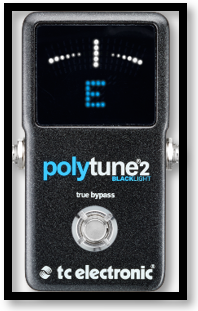Having guitar pedals is something you should really consider.
There are many different options when it comes to pedals.
Pedals come in many forms including those with single effects (the traditional ones that probably look most familiar, and the multi effects units.
As technology improves, there are many FX solutions on the market that are starting to combine amplifier and FX together in to a single unit that is then programmable and re callable.
I’m still a romantic and enjoy the single pedals, as I find you must tweak everything for each gig any way.
I play many different styles so picking 3 pedals only is very hard.
In my decision process, the way I decided was which pedals have consistently hung around on my board over the years.
I think picking a single pedal type rather than just a style is difficult. Especially as technology improves. Some people opt for the older vintage pedals, but I must admit that with the improvements in DSP, the digital pedals are hard to beat.
Note that I’ve always had an amplifier with a distortion channel, so my pedal selections assume this. Also, I’ve excluded channel selector pedals and attenuator pedals for your amp. My Orange Rockerverb Mark III has a brilliant attenuator on it, so I can have a fake boost switch by taking off the attenuator to produce the lead channel. Get an amp with an attenuator capability, it will change your life!
Here’s my list.
Please feel free to join my free Fret Success Academy on the website.
CLICK HERE TO JOIN NOW!
Pedal 1: Tuner Pedal
This style of pedal has been on my board since I can remember, even before I got a board. Having a tuner is the most important thing in your guitar playing.
If you’re going to play live, then a tuning pedal is a definite fixture on the board for me.
However, having one for practice and recording is also crucial, especially one that can quickly check the tuning of all strings at once. If you don’t have a tuner in your chain for recording, overdubs and retakes can become messy. If one take is slightly out of tune compared to another then you’ll get an unprofessional sound, which will stand out.
Being in tune is King!
In terms of specs, for me, it needs to have:
-
- Strobe tuning (very high level of sensitivity and resolution);
-
- Multistring tuning (check if any strings are out of tune instantly from a single strum);
-
- Output mute function when tuning (no one wants to hear you tune, it also doubles as a mute pedal for those instances you stop playing); and
- True Bypass (having no influence on the sound).
I used a Boss TU range of pedals for a long time but when I saw that TC Electronic had released a tuner with all the capabilities above, I had try it out. The TC Electronic Polytune 2 has been on my board since it came out and I don’t really see me needing any other tuner ever, it’s brilliant.

Pedal 2: Compressor Pedal
This may be a slightly odd choice to some people, especially rock players. A distorted signal through an amp is already well compressed, so adding compression isn’t necessary.
A compressor pedal reduces the difference between the quiet and loud signals from your guitar, giving more consistency to the level.
However, compressors also make the noise floor signal higher due to increasing the lower signals. You must apply compression carefully. If you over do it, it will sound noisy and choked with a horrible slow and noisy decay. Use compression gently.
The reason I’ve selected a compressor pedal is for when I need to get a certain clean sound for Jazz, Country and Funk styles. These styles generally call for a consistent volume in the guitar parts and this is achieved with a compressor.
A compressor is part of the tone and sound for guitar in these styles.
If you dial in the compressor just right, you can make your clean sound pop and it also requires less effort to get the notes out and makes things sound more even in the process.
My current compressor of choice is the MXR Custom Comp. It’s much quieter than any compressor pedal I’ve tried and only having the two knobs makes it easy to use.

Pedal 3: Delay Pedal
The third pedal was a tough one to choose for me.
His could have been so many other pedals including Digitech Whammy DT, TC Electronic Mojomojo, Vox Wah, TC Electronic Hall of Fame Reverb, the list goes on.
I came to a decision by thinking what pedal I would need to complete a small board to take on tour with me. What is my most basic 3 pedal setup that I see myself needing?
Recent projects have seen me need to use the Digitech Whammy DT style pedal to change tuning or do some pitch shifting.
But this isn’t the norm, it’s an exception.
When it comes down to it, a delay pedal was the best candidate to fit that third slot on my board. It just makes sense.
I find that having a delay pedal to add space to a guitar sound, especially lead, is something that I often must do.
I’ve had my current delay pedal for over 10 years and that’s the BOSS DD-6 Digital Delay. It sounds great and is easy to use and adjust on the fly, especially to get some cool high feedback loops going for song transitions.

I’m sure others have their own choices and I have many more than 3 pedals on my board that have specific uses. I wrote this based on the pedals I use the most and tend to go to as a standard when writing, jamming and doing general performance work.
I hope this was interesting and maybe even useful to read.
I’d love to hear more about the pedals you would choose and why.
Drop a comment below with your pedals!
I hope this article has been of use.
I also have lots of free guitar lesson guitar available when you subscribe to the Fret Success Academy.
CLICK HERE TO JOIN NOW!
Thanks,
Dan

(Founder)
www.fretsuccess.com
